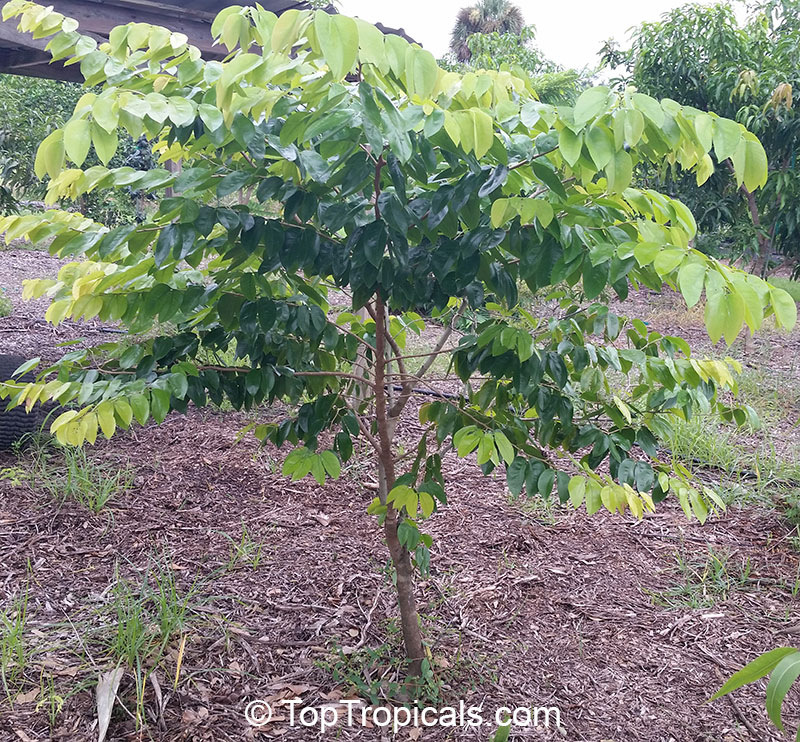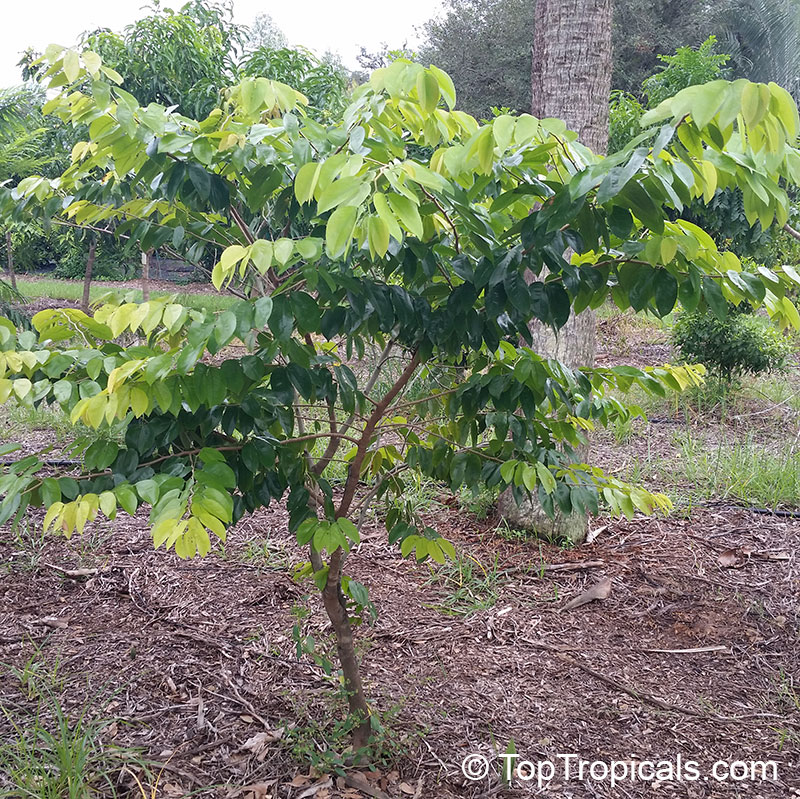Hymenaea courbaril (Stinking Toe)
Top Tropicals Plant Encyclopedia
Botanical names: Hymenaea courbaril, Inga megacarpa, Hymenaea animifera
Common names: Stinking Toe, Jatoba, Coapinole, Courbaril
Family: Fabaceae
Subfamily: Caesalpinioideae
Origin: Central and South America





Hymenaea courbaril, commonly known as Stinking Toe, is a small deciduous tree that typically grows between 10 to 20 feet in height and spread. The tree has a wide and spreading canopy, and it is frost hardy to at least the mid 30s F for a short time. However, when grown in pots in cold locations, they should be brought inside during cold months and put in a sunny and warm spot.
Stinking Toe thrives in full sun. For optimal growth, the tree prefers regular water, although some drought tolerance is possible. This plant can be grown in USDA Zone 9-11.
The plant produces fruit when mature. The fruit is eagerly sought out by wildlife and is also edible by humans. It has many health benefits attributed to it, such as reduced inflammation and improved digestion. A mature Stinking Toe can produce between 20 and 40 fruits per season.
The plant derives its name "Stinking Toe" because its seedpods look like big, fat toes and are said to smell like smelly feet or toes. Despite the name, the fruit is delicious, and the pulp of Stinking Toe is sweet-tasting and can be eaten fresh or made into a beverage. The plant also has many uses in folk medicine, ranging from alleviating headaches to treating gout.
The white flowers are pollinated by bats. Moreover, the plant produces usable copal resins, mostly underground and at the base of the tree. The orange sticky gum of the plant converts to amber, but this process takes millions of years. As a result, this forms a hard polymer that is resistant to natural decay processes.
Similar plants: Hymenaea courbaril (Stinking Toe)
- Hymenaea verrucosa (Copalier)
- Mansoa alliacea (Garlic Vine)
- Calliandra tweedii (Red Tassel Flower)
- Inga edulis (Ice Cream Bean)
- Inga ilta (Inga)
- Inga jinicuil (Paterno)
- Inga nobilis (Guama Venezolano)
- Inga spectabilis (Ice Cream Bean)
- Inga uruguensis (Inga banana)
- Peltophorum pterocarpum (Golden Flamboyante)








